 1,883
1,883
1939 Vincent-HRD Series-A Rapide
Of all the many makes and models of motorcycle produced during the 1930s, there are two outstanding v-twin-engined thoroughbreds that feature at the top of every knowledgeable enthusiast’s ‘fantasy barn find’ league table: the Brough Superior SS100 and Vincent-HRD Series-A Rapide. These days the chances of finding an example of either hidden behind a pile of straw bales are slim indeed, all the more so in the case of the ultra-rare Series-A Rapide, a mere 78 of which were produced between late 1936 and the summer of 1939. (Expert opinion differs on this point, but most authorities favour a total in the high 70s). By way of comparison, production of the rival SS100 ran into the hundreds.
The Vincent-HRD marque originated in 1928 when Philip C Vincent acquired the name, jigs, tools and patterns of the recently liquidated HRD Company. (‘HRD’ stood for Howard Raymond Davies, the Isle of Man TT winner who had founded the firm in 1924). Vincent moved production from Wolverhampton to Stevenage, pioneering his own design of sprung frame on an entirely new range of machines. Like Davies, Vincent relied on proprietary engines but increasing dissatisfaction with suppliers led to the creation of Vincent’s own engine in 1934. A 500cc high-camshaft overhead-valve single, this all-new power unit was designed jointly by PCV and his Chief Engineer Phil Irving who, so legend has it, came up with the idea of a 1,000cc v-twin after seeing two drawings of the single superimposed on one another. By producing a v-twin in this fashion, many of the existing single-cylinder components could be utilised, thus reducing costs, an important factor for the fledgling concern.
Despite its plethora of external oil pipes – an arrangement that gave rise to the famous ‘Plumber’s Nightmare’ sobriquet – the Series-A v-twin is undeniably handsome, its high-set camshafts and relatively short cylinders endowing this magnificent motorcycle with a muscular, broad-shouldered look. On test, the prototype engine proved to be as powerful as its looks suggested, delivering a maximum of 45bhp at 5,500rpm on a relatively low 6.8:1 compression ratio. It was installed in a new version of Vincent’s sprung frame equipped with Burman four-speed gearbox, girder front fork and powerful twin front brakes, the complete machine tipping the scales at an admirable 430lbs. On the road the Series-A Rapide fulfilled all of its maker’s expectations, proving capable of reaching 110mph, comfortably faster than the rival JAP-powered SS100.
First registered on 4th October 1939, this ultra-rare Vincent Series-A twin is believed to be the penultimate example completed before production ceased. The factory records list only one higher engine number, ‘V1077’, which is dated 1940. For the last 55-plus years ‘FYO 967’ has belonged to the current vendor’s family, having been purchased by the owner’s late father, William Henry ‘Harry’ Lloyd, in August 1959. The accompanying old-style continuation logbook, issued December 1958, lists only one owner prior to Harry Lloyd: Mr Philip L Johnston of Liverpool, who had acquired the Vincent in April 1955. Its previous history is not known.
The ranks of Vincent owners contain a disproportionately high number of engineers, Harry Lloyd among them. He served his engineering apprenticeship during WW2 and went on to work for several manufacturing companies, including Lucas Aerospace as a toolmaker. In a letter to Motorcycle Sport magazine (October 1969 edition), Harry recalled that he first encountered the Rapide when it was ‘on its way to the breaker’s yard with a wrecked gearbox and minus wheels and other bits and pieces.’ The Vincent belonged to an employee of Horsman Motorcycles in Liverpool (presumably the aforementioned Mr Johnston) and was in his back garden in a partly dismantled state. The sum of £10 and an Amal TT carburettor changed hands, and Harry found himself the owner of the Rapide. He already owned a Series-A Meteor and Comet, and parts from these two machines were used to get the Rapide back on the road. ‘The final result was – engine, frame, gearbox main shell and electrics all original Rapide; forks, wheels, gearbox outer cover and change mechanism Comet; valve gear, rockers and pushrods Comet and Meteor.’
After a new main-shaft had been made to sort out the troublesome gearbox, the Rapide (with sidecar attached) ran well throughout 1961/1962 before transmission trouble returned. After a period when the Vincent was laid up, the problem was solved by having a new steel clutch centre (with increased spline length) made together with another main-shaft. The machine ran well during 1966-1968 before a broken primary chain exited through the front of the chain case, which had to be welded. An engine strip-down revealed worn valve gear and cams, and at the time Harry Lloyd wrote to Motorcycle Sport, the Rapide was off the road pending a rebuild having covered some 20,000 miles while in his ownership, including two holidays of over 1,000 miles.
The now dismantled Vincent was stored in a lock-up garage rented from the local council, which around 1980 erroneously rented the premises to another resident who proceeded to clear it out. Fortunately, Harry Lloyd was informed in the nick of time and was able to rescue his beloved Vincent as it was being loaded into a rubbish skip! The precious machine was transferred to Harry’s house where it remained securely stored in the back bedroom until in 2007. Given its history, it can be safely said that this motorcycle’s survival to the present day is thanks to Harry Lloyd’s engineering knowledge and passion for Vincents. The restoration commenced in 2007 and was entrusted to the highly respected marque specialist Glyn Johnson of The Vincent Workshop Ltd, but sadly Harry passed away in 2008 and did not see the finished result.
Completed in 2013, this was a most comprehensive restoration undertaken to concours standard, both mechanically and cosmetically. A measure of its quality may be gained from the painstaking approach taken to the use of stainless steel fastenings. Every nut, bolt, stud, washer and fitting has been reproduced in this material to as near original pattern as possible, being finished in one of three ways: polished to simulate a chromed finish; dull blasted to simulate cadmium; or chemically blackened to simulate a Parkerised finish. The result is a finish that has the same appearance as the original but with the enduring qualities of stainless steel.
The paintwork is all traditional stove enamel. The engine rebuild included pressure impregnation of the main castings to counter known porosity problems; new alloy cylinder barrels; hardened (lead-free) valve seats; and new cylinder liners (cast iron), pistons, cams, valves, valve guides, rocker covers, pushrods, bearings, etc, etc. New inner and outer primary transmission covers were cast from LM25 aluminium alloy (using the originals as patterns) and the gearbox rebuilt using stronger post-war gears running in bronze bushes. The clutch is a new 7″ Burman of original type.
Specialists Martyn Bratby and Dave Lindsley restored the Amal carburettors and Lucas magdyno respectively, while the forks were rebuilt by Ray Daniels, including conversion to bronze-bushed pivots. New brake drums were made in cast iron for superior performance while maintaining the appearance of the original pressed components. The ‘tinware’ – mudguards, lifting handle, tool box and numberplates – are all new and to original pattern, while the fuel tank is the original: repaired, pressure tested, polished and repainted. The exhaust system and its fittings are all new.
A complete electrical rewire was carried out using cables and fittings similar to the originals. All the headlamp components were renewed with the exception of the shell, reflector and ammeter, which were reconditioned. The taillight is an original new-old-stock item. Glyn Johnson’s detailed list of all the works carried out is available for inspection. It should be noted that this motorcycle has been bench run only and then decommissioned for storage/display at the owner’s request. Accordingly, the machine will need to be carefully commissioned, calibrated and tuned prior to any use.
‘FYO 967’ retains its original registration number and is offered with the aforementioned documentation, VOC dating certificate, copy/current V5/V5C registration documents a copy of the factory Engine Specification Sheet. The latter records the assembly technician as ‘Brown’, though whether this refers to the famous racer George Brown or his less well-known brother (and biographer) Cliff, another Vincent employee, is not known.
See it here.






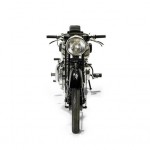
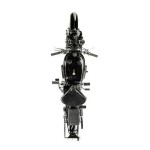
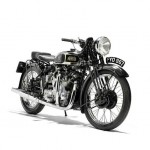
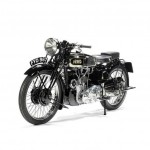
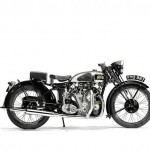
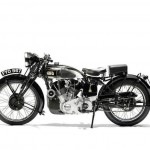
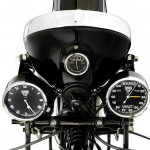
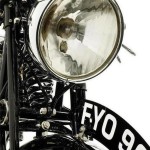
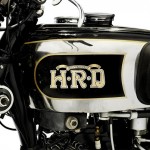
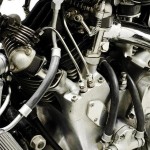
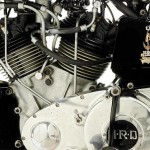
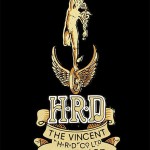

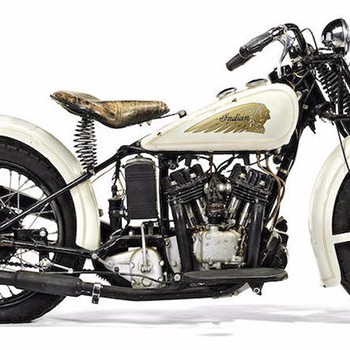


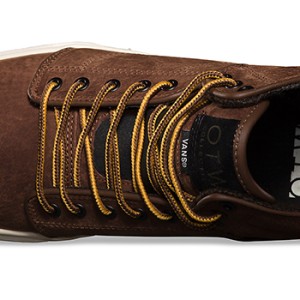
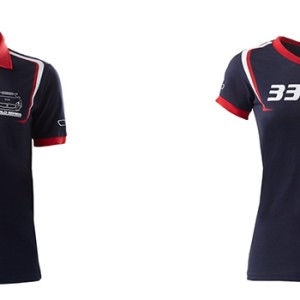











DON'T BE SHY, LEAVE A COMMENT!